The hillside is tinged with violet, rippling softly in the breeze, and it takes me a moment to notice that this is also the colour of the wildflowers beneath my feet. This stretch of lower North Island coast is carpeted with pink ragwort, and the footpath ahead winds out of sight into the purple haze.
Above me, sheep are grazing behind the fence running along the ridgeline. On my other side, the Tasman Sea stretches out to the horizon.
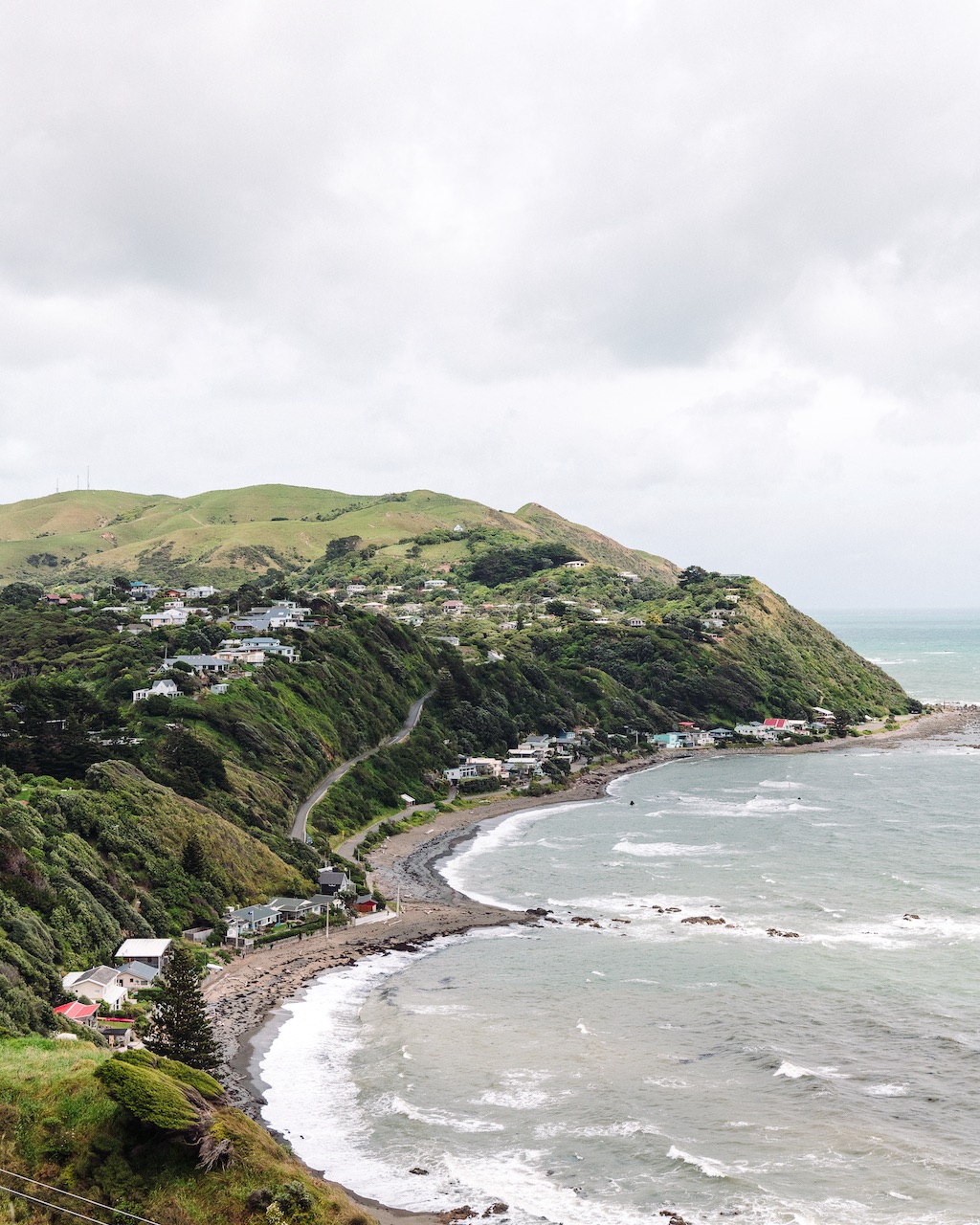
Waves nibble at the shoreline, the sound of the surf swallowed up by the sheer distance. All I can hear is the wind. I’m so high up that walking feels a little bit like flying, the illusion buoyed by seeing the tawny back of a kārearea, a New Zealand falcon, soaring below me.
After a couple of kilometres walking through a forest of glossy green kohekohe trees, where tiny star-shaped flowers bespeckle the earth, the track emerges onto open hillside, and I climb a set of stairs as steep as scaling the spire of a cathedral. I’m grateful for the benches along the way, partly to catch my breath and partly because each fold of the hills opens a new vista of the Kāpiti Coast. Ahead, I spot my destination, the settlement of Pukerua Bay, where eventually I’ll catch the train back to Wellington.
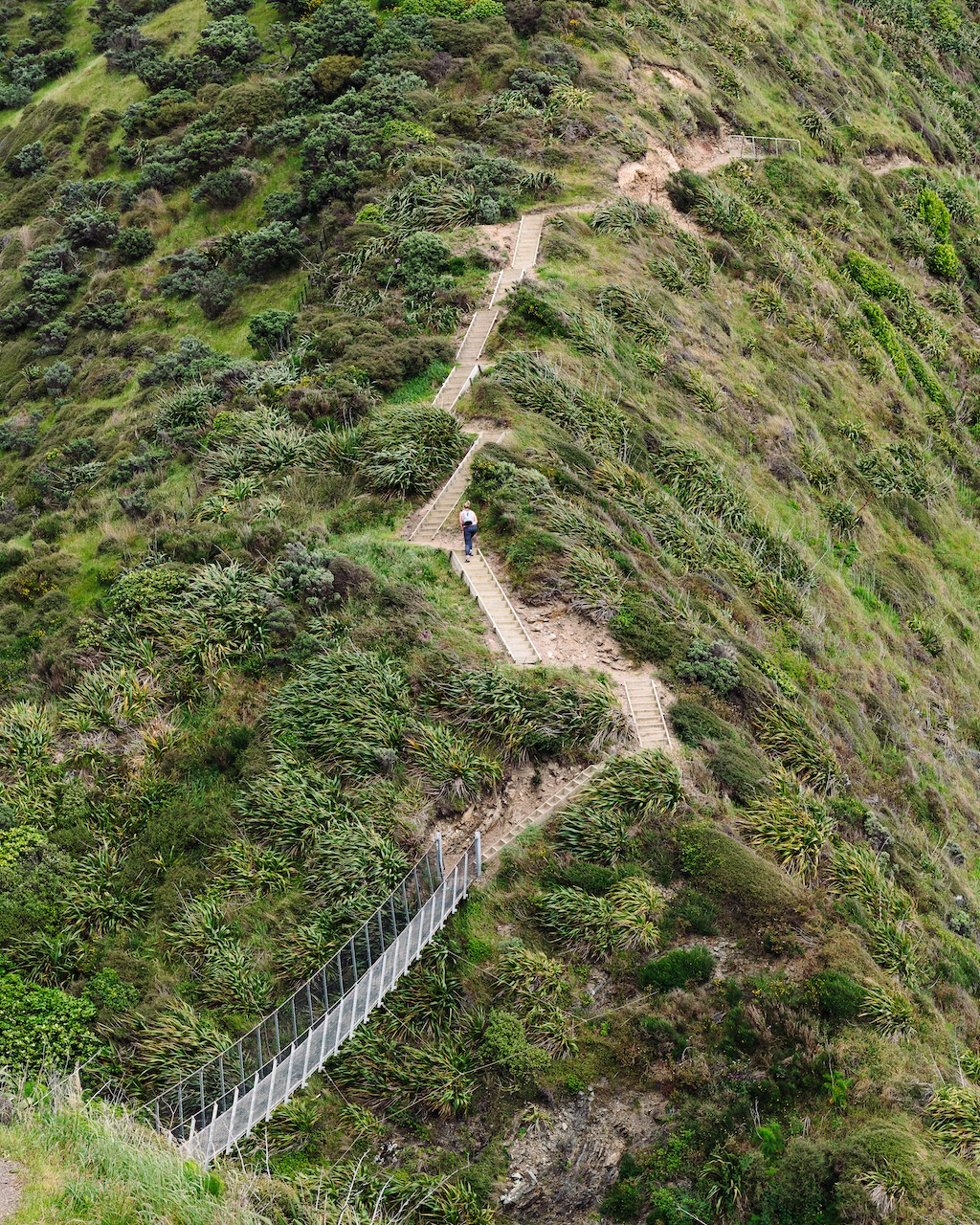
The Paekākāriki Escarpment Track, situated about 30 minutes’ drive from central Wellington, runs for 10 kilometres between two train stations, but also continues way beyond. It’s part of Te Araroa, a 3,000km trail which extends from the tip of New Zealand’s North Island to the bottom of the country’s South Island. On this thin trail, I can imagine walking all the way down the spine of the country until there’s nothing between me and Antarctica.
The track opened in 2016, so it is considered new by New Zealand’s walking scene standards. According to Asher Wilson-Goldman, who works for the Walking Access Commission and is a passionate advocate for the Kāpiti Coast, it was built entirely by volunteers who carved it into the hillside by hand. Growing up in Wellington, Wilson-Goldman spent summers and weekends at Paekākāriki, the tiny seaside town at the northern end of the trail.
Watch: The Paekākāriki Escarpment Track is a thin trail that allows you to traverse across suspension bridges and explore steep stairs — all while offering up a view of the gorgeous Kāpiti Coast.
He was considering a move to the coast when he and his wife went for a walk on the Escarpment Track soon after it opened. “It’s pretty easy to fall in love with the Kāpiti Coast from that vantage point,” he tells me, adding that they promptly made the move.
“Kāpiti has all the things we want to live a good life – the bush, the beach. The weather is better here as well; often it’s raining in Wellington, and the moment you cross over Pukerua Bay hill, it’s sunny. We don’t get the wind,” he says. “We grow limes 10 months of the year, passion fruit, figs – all the stuff that doesn’t grow in [the city]. When we go to sleep, it’s quiet, and the only thing we hear when we wake up is the birds calling out to us.”
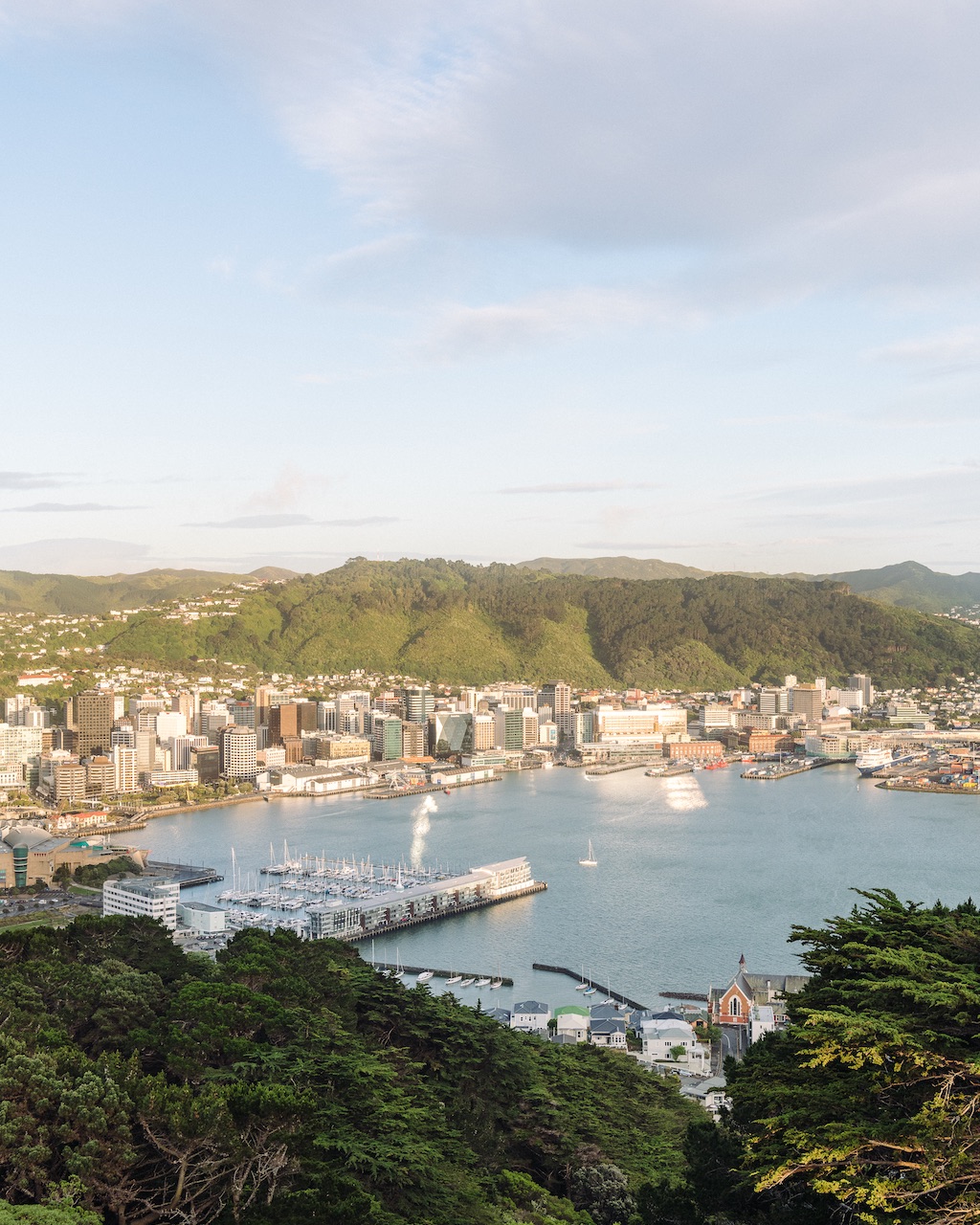
As I make my way along the track, the more I take notice of the little things that make this place so special. Shadow and sunlight passing over the bulk of Kāpiti Island on the horizon; gulls hanging motionless in the sky, suspended in the breeze; and an enormous bumblebee lurching from sweet pea to sweet pea.
Walking the land is a way of understanding it – Wellington artist and researcher Huhana Smith once told me when she went on a hikoi (walk) following the course of a stream. The pace of her footsteps was the right speed for noticing details of the environment, she said. She saw what was flourishing, and what wasn’t.
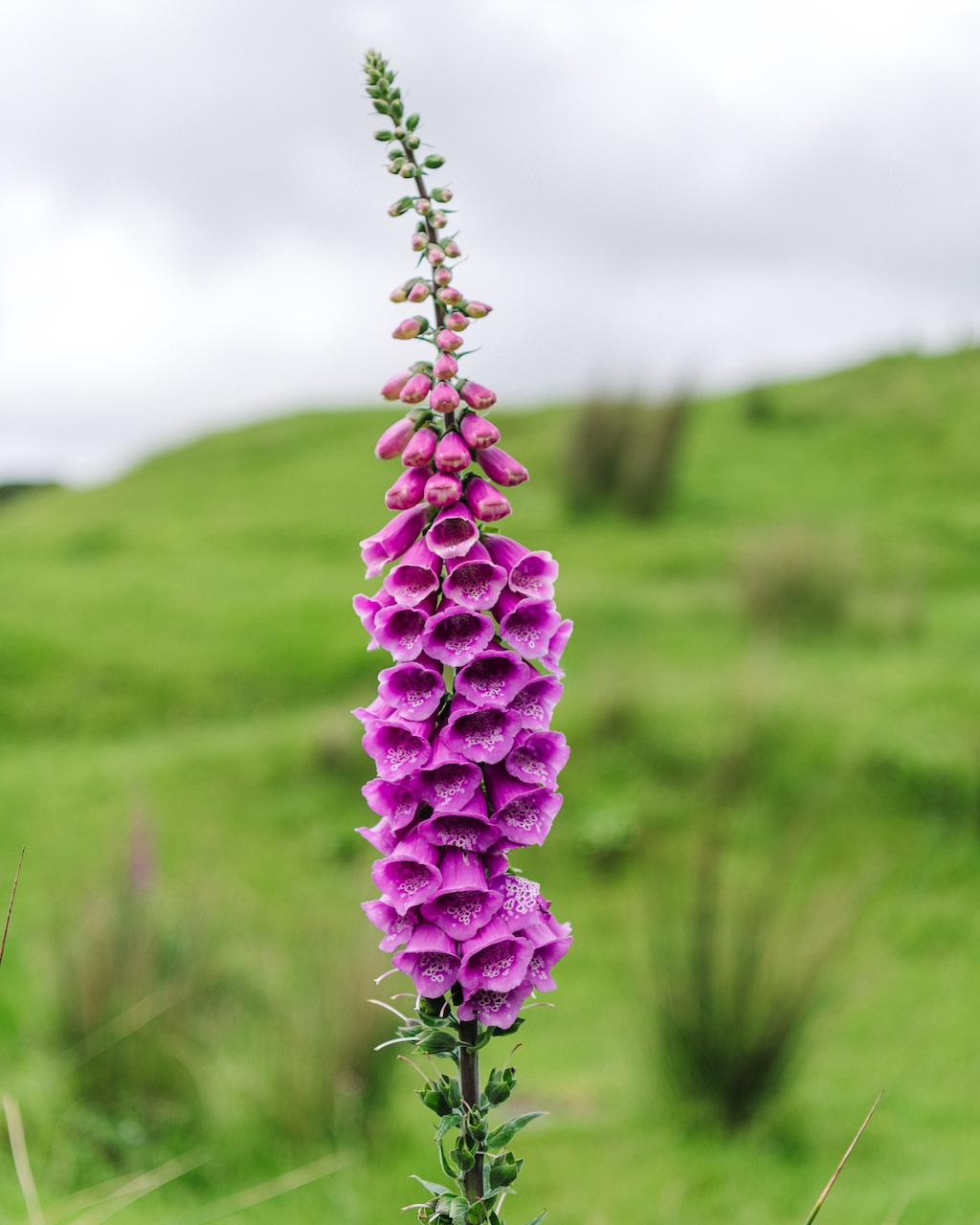
The city
To best understand downtown Wellington, then, I need to walk through it. Other New Zealand cities don’t reward sightseers who travel on foot, but Wellington is built to the scale of the human stride – its centre is densely packed, an intriguing mixture of old and new.
Someone who knows this better than most is my walking guide Peter Sledmere. Born in London, he has lived here for more than 50 years and has been leading Walk Wellington tours for a decade. A former radio announcer, he has a storyteller’s voice, one that is warm and full-bodied. “Because it’s a small city, you sort of have more of a sense of identity,” he says. “London is a great city, but you’ll feel you’re anonymous, a tiny part of the whole mass, whereas in a city like Wellington, there’s more individuality.”
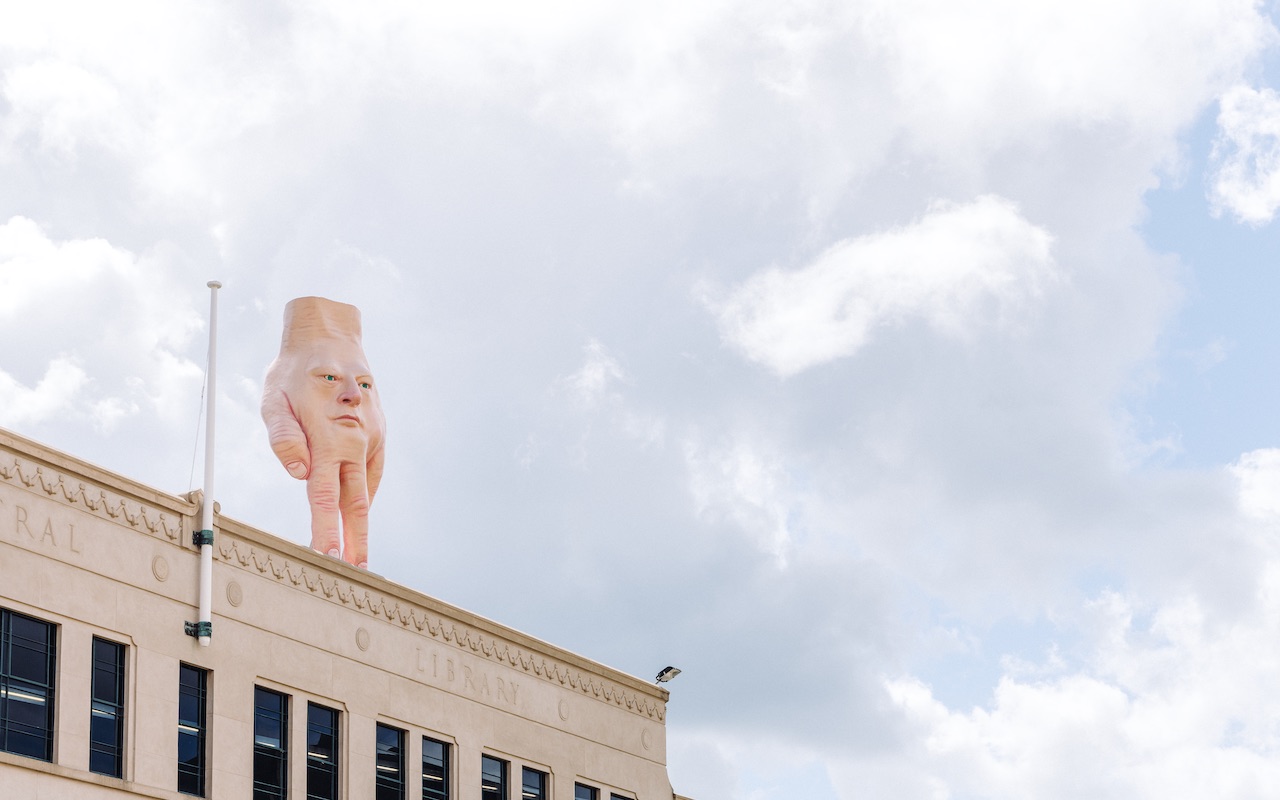
The Walk Wellington route he takes me on passes the stately City Gallery, the sun reflecting off its smooth white stone, long rectangular windows lined up in a row. Here, classical architecture is at odds with the sculpture of a giant hand perched on the edge of the gallery’s roof, a face carved into the back of its palm.
It’s one of the strangest things I’ve seen in a while, stranger even than the wild hair and second-hand-shop outfits of the city’s students, who pass me sporting velvet wide-leg pants, curly mullets and voluminous knitted sweaters. The hand – scanned off artist Ronnie van Hout’s own body – is itself a celebration of freaks. It probably feels right at home in what is surely New Zealand’s quirkiest city.
Continuing down Featherston Street, a major strip of shops and offices, it’s a jumble of eras, with historic buildings standing shoulder to shoulder with towering glass and the lumbering, thick concrete façades of the 1960s. It’s a busy street, but I’m always looking up – this mix of Victorian and modern architecture as neighbours delights Sledmere. So do the layers of history enfolded within each building, each corner, each name.
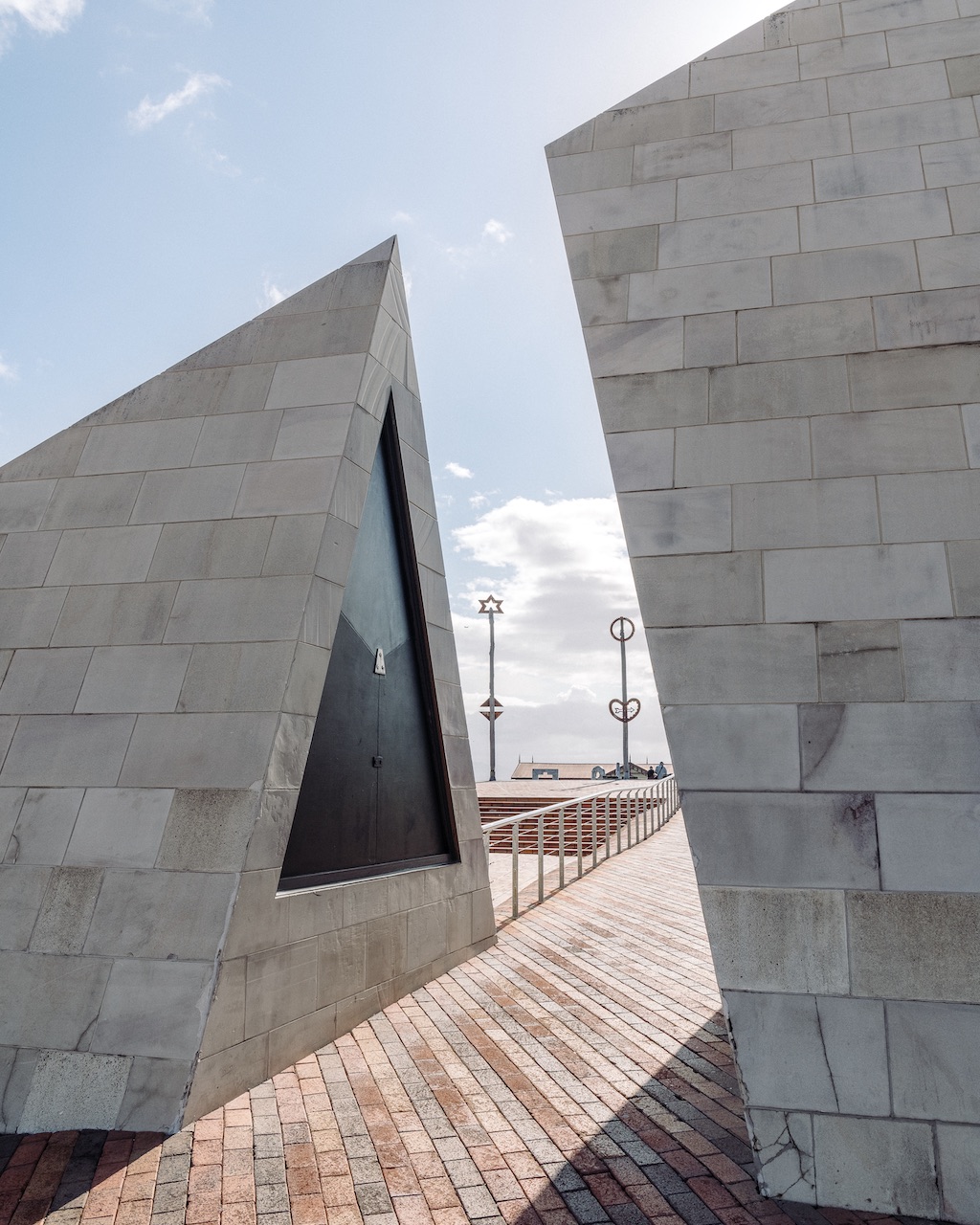
Sledmere tells me that Featherston Street is named after a doctor who fought a duel with the man whom Wakefield Street, on the other side of town, is named after. “Wakefield fired first and missed,” he says. “Featherston fired his pistol into the air and said, ‘I couldn’t shoot a man with seven children.’ This was 1840 – it’s not that long ago.” I get the feeling that Sledmere could talk for hours, but he’s just too polite to do so. But performing the history of Wellington, peeling back its layers, is something that he takes very seriously.
“It’s a place with stories that you have to discover, or have to be told, they’re not very obvious on the surface,” he says. “It’s making a town live in people’s minds, rather than something they just walk around and look at. You’re opening little doors that people can peek through.”
Watch: The Wellington Waterfront provides a lovely walk right in the heart of the city. Here’s where you can find the Te Wharewaka o Pōneke, Te Papa museum, Queens Wharf and and Oriental Bay.
The waterfront
After completing the Walk Wellington route, I return to the waterfront, following it south around the bay. Opposite Frank Kitts Park and its lighthouse-shaped slide, a busker plays airs by Bach. Teenagers are jumping off one of the pontoons into the harbour. Above them, a wooden plank extends over the water, a skull and crossbones drawn at its base. Someone has attached a crocheted penguin to a pole, like woollen graffiti.
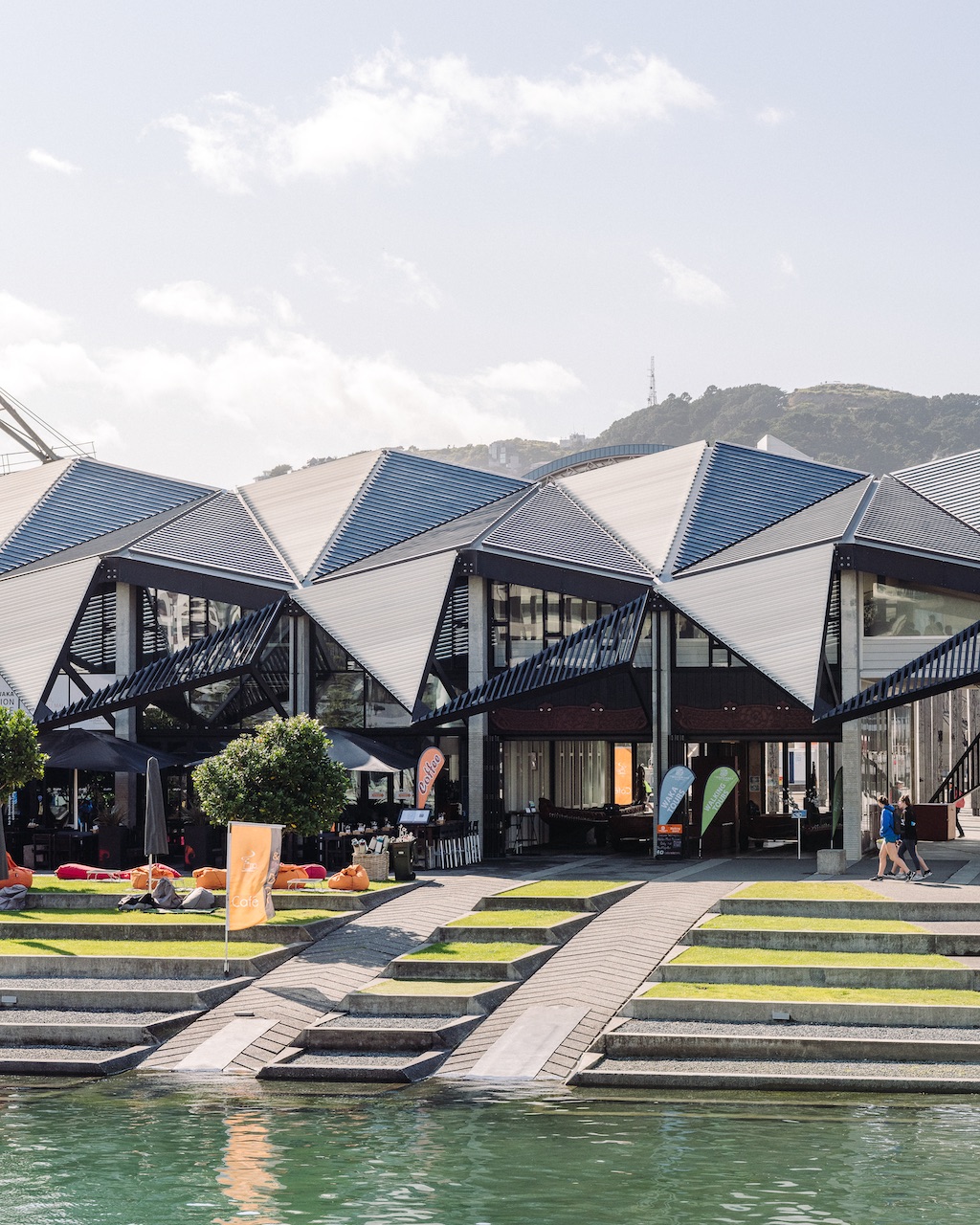
My eye is drawn upwards by a dramatic sculpture. It’s Kupe, the legendary Polynesian explorer, at the moment of discovering Aotearoa, the Māori name for New Zealand: “land of the long white cloud”. His wife, Hine Te Apārangi, points ahead – the first to sight land – while his tohunga, or priest, Pekahourangi, glances off to one side.
Behind Kupe’s statue is a building with decorative gables extending beyond its outer walls, and I recognise the shape of a wharenui, or Māori meeting house. This is Te Wharewaka o Pōneke, the canoe house of Wellington, and it represents Kupe’s descendants and their tradition of voyaging by waka, or canoe.
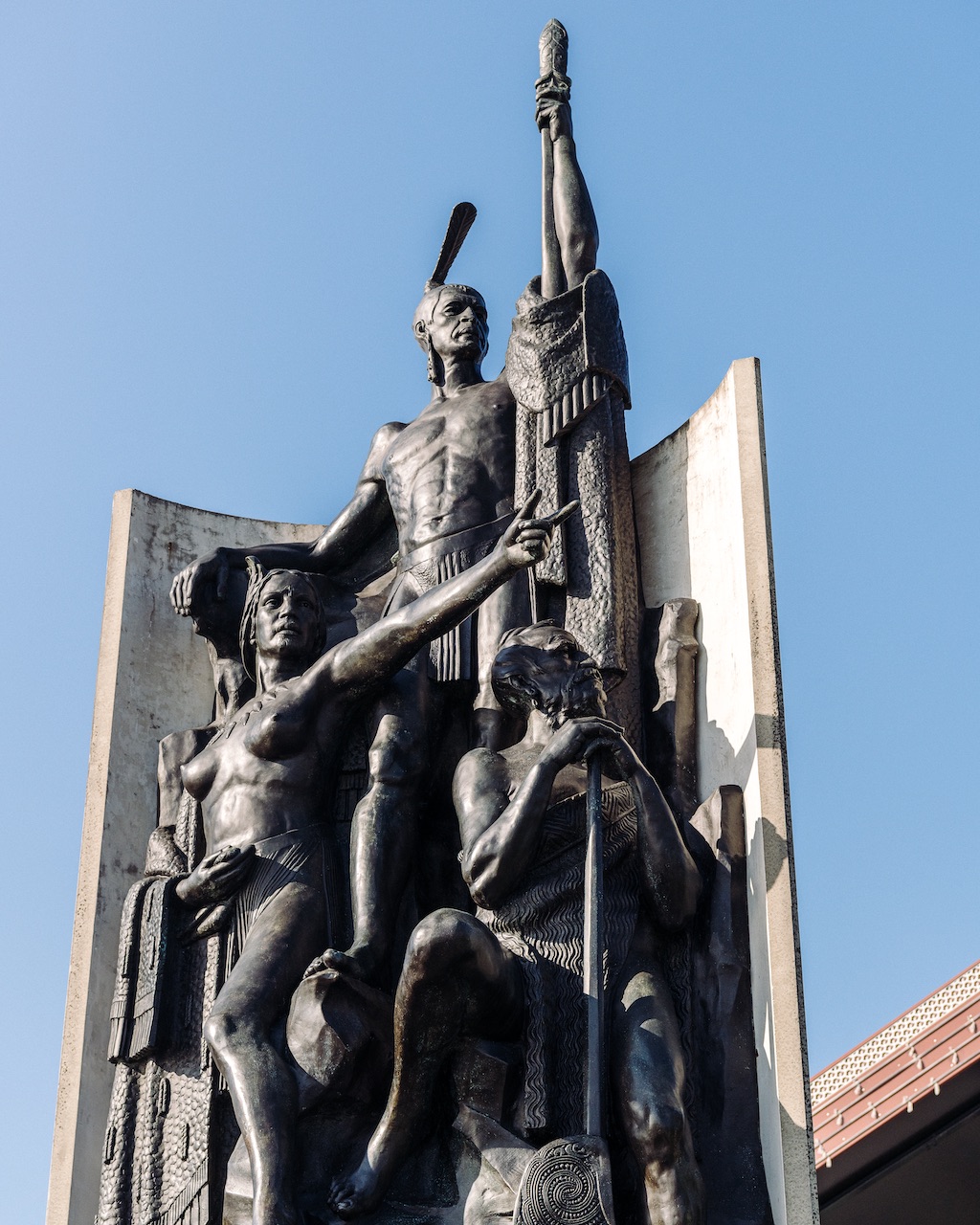
I pause, before I go in, to remember a few words of te reo (“the language”, as Māori is also known among its speakers): my introduction. When I first speak to Te Wharewaka guide Taupuruariki Brightwell, she tells me of the greeting, or mihi whakatau, an important first step before she takes anyone walking or paddling: “A mihi whakatau is an informal welcome to acknowledge our guests, to teach them the tikanga, or protocol,” she says.
When you introduce yourself in Māori, you don’t begin with your name, but other details to communicate your background. Which waka did your ancestors arrive on? Which is the closest peak to your home, the closest body of water? I learn how to say: This is my mountain, this is my sea. “Once the ceremony is done,” Brightwell tells me, “it lifts the sacredness of the area, so that two parties both become one and move into the embrace of the host.”
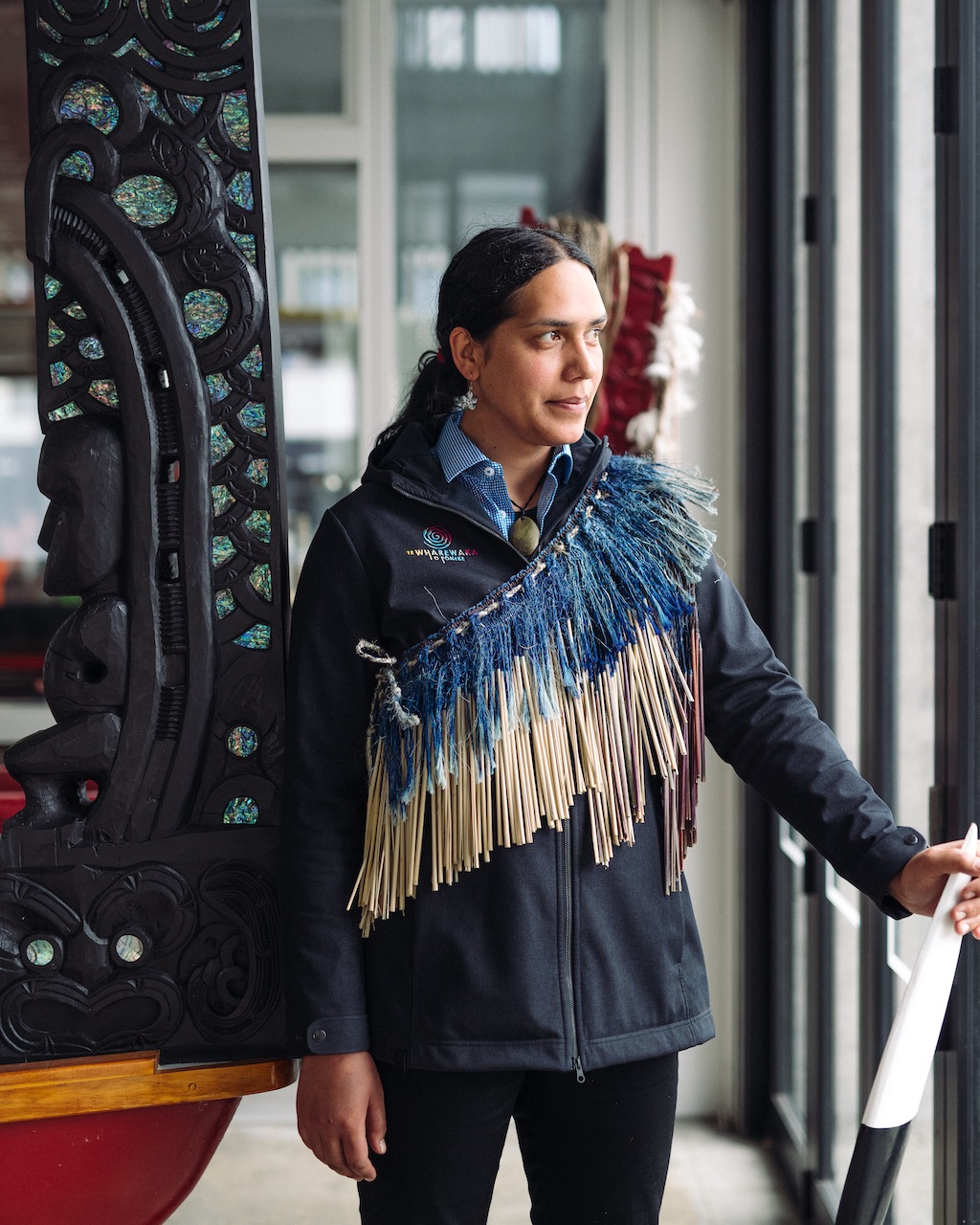
Te Wharewaka’s walking tours go up Taranaki Street to Te Aro Pā, an archaeological excavation showing the remains of the extensive pā, or village, that once stood on the shoreline. The low foundations on display today were once whare punga, houses made from the trunks of fern trees. Brightwell’s stories build on these sketch-like remains: the pā held perhaps 200 people who lived off the land.
It’s becoming clear to me that waka, rather than walking, was the preferred method of transport for Māori. Compared to the dense North Island bush I glimpsed on the Escarpment Track, the sea is a highway. “The ocean is the route our ancestors came from,” agrees Brightwell. “Waka to us was a way to travel quite fast over the landscape, so waka represent a tribe’s prestige, or mana.”
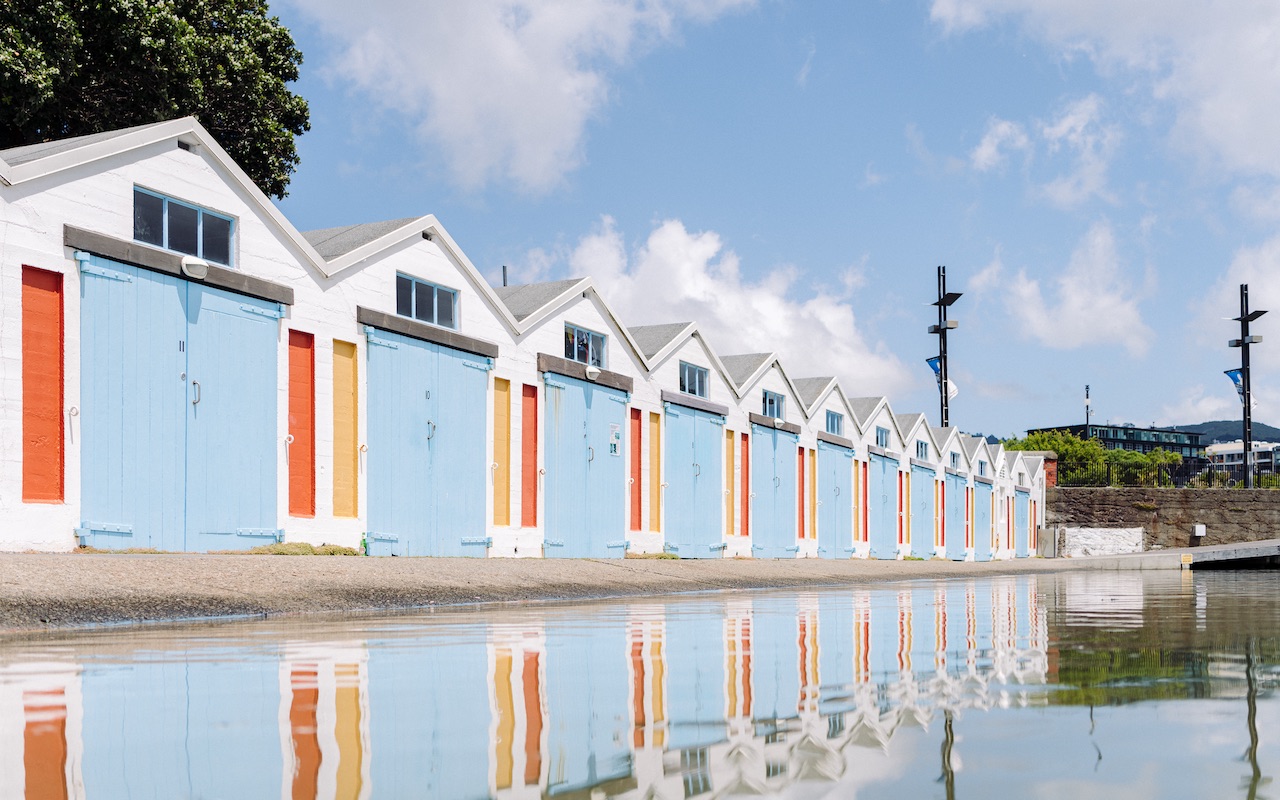
Back at Te Wharewaka, I notice the slipways used to launch the waka for harbour tours, and for a moment, I wish I was continuing by sea. But ahead of me are the boatsheds of Oriental Bay, their bright blue doors lined up all in a row. It’s a fine evening, and teenagers are sunbathing on the zigzag shed roofs. Around the corner, the bay unfolds in front of me, a strip of golden sand. I pass a villa named Te Kāinga, or Home. Ahead of me is the path leading up Mount Victoria. Perhaps I’ll climb for a view of where I’ve been, or perhaps I’ll linger here in the sun.
It then occurs to me: the more you understand about a city, the more you belong to it – the more you feel like one of its own. I turn back to the bay, imagining canoes pulled up, the plumes of southern right whales in the harbour, the palisades of the pā. I imagine growing up here, with Mount Victoria standing over me, the embrace of the harbour around me, thinking: this is my mountain, this is my sea.
Summer’s best day trips
Martinborough
Wellington’s wine country has about 20 vineyards within walking or cycling distance of Martinborough, which also hosts large fairs during the summer. It’s about an hour’s drive from Wellington. Hire a bicycle when you get there, or spring for a guided wine tour.
Picton
On a sunny, calm day, take the ferry across Cook Strait to the South Island. It’s a three-and-a-half-hour scenic cruise, which passes through the Marlborough Sounds to the tiny town of Picton. Ferry companies Interislander and Bluebridge operate the route, but avoid the crossing in stormy weather.
Red Rocks Reserve
The seals here look like slick, wet rocks, that is until they start to move. The seal colony on Wellington’s south coast is an easy walk from the carpark at Owhiro Bay past Red Rocks, 200-million-year-old lava formations. The colony is at its largest in winter, but about 50 remain in summer, lazing about.
Explore more on foot
Zealandia by Night Tour
This small-group ramble around the large inner-city eco-sanctuary starts at dusk, leading to encounters with New Zealand’s many nocturnal species, such as the park’s 130 little spotted kiwis.
Sculpture Tour
This free one-hour walking tour run by City Gallery tells the stories behind public sculptures around the waterfront, on the City to Sea Bridge, in Civic Square and within the gallery.
Zest Food Tours
Eating and strolling is a salubrious combination. Most of Zest’s multi-hour tours involve only 90 minutes of walking and span a range of durations and languages.
Singapore Airlines flies to Wellington five times a week. To book a flight, visit singaporeair.com
SEE ALSO: The best locally owned establishments in Wellington
This article was originally published in the January 2020 issue of SilverKris magazine
The post A walk through Wellington’s sights reveals its storied past appeared first on SilverKris.
from SilverKris
No comments:
Post a Comment